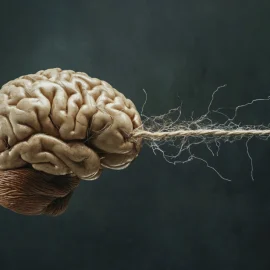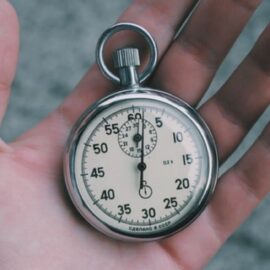

This article is an excerpt from the Shortform book guide to "Awaken the Giant Within" by Tony Robbins. Shortform has the world's best summaries and analyses of books you should be reading.
Like this article? Sign up for a free trial here .
What does Tony Robbins say about leverage? How can psychological leverages motivate you to make changes in your life?
If you often struggle to motivate yourself, you might need psychological leverage. Tony Robbins’ leverage for motivation is where the pain of continuing your behavior outweighs the pain of making a change. Use this to achieve any goal, whether it’s going to the gym, quitting smoking, or making a change in your romantic relationship.
Keep reading for more about Tony Robbins, leverage, and how to cultivate it.
Tony Robbins: Leverage for Motivation
Once you know what change you want to make, create a sense of urgency about making it. Often, people don’t make the changes they want to because they continually delay them. They know that the change would improve their lives, but they don’t muster up the motivation to actually do it.
This lack of motivation often occurs because people have mixed emotions about change: They associate both pain and pleasure with it. Sometimes those mixed emotions come from a secondary gain, which is an often-subconscious association of pleasure with the bad behavior you want to change. For example, a smoker who wants to quit may associate pleasure with the thought of better health and the savings from not buying cigarettes, but she may also associate pleasure with the social aspects of smoking. These mixed associations prevent you from committing your full focus and energy to making the change.
If you’re struggling to get enough motivation to make a change now, due to a secondary gain or something else, you need leverage, according to Tony Robbins. Psychological leverage is a tool that makes the heavy burden of change more achievable, just as physical levers are used to lift heavy items. You gain this leverage when you reach the pain threshold, where the pain associated with continuing your behavior finally outweighs the pain of change. This is the moment when you feel you just can’t take it anymore, and that feeling gives you the motivation to finally take action.
You can have external leverage when someone or something pushes you to make a change—for example, when your spouse nags you to stop smoking or your doctor implores you to lose weight. However, you’re more likely to push back and rebel if someone else is pressuring you to change.
According to Tony Robbins, leverage types determine how successful they will be. For example, the most effective leverage is internal leverage, when you’re motivated to make the change for yourself. One way to gain internal leverage is by realizing that the behavior you want to change contradicts your personal standards, values, and principles. Realizing that you’ve failed to act in a way that honors your standards and your identity causes a lot of pain, which in turn creates a strong motivation to change. Gain insight into whether your behavior is undermining your principles by asking self-reflective questions, such as “How does this specific behavior support these specific values?” and “What kinds of actions support this specific value?”
Apply It: Create Leverage
Tony Robbins’ leverage advice can be used to change your life for the better. Use the following exercise to get started.
If you have a behavior or emotional pattern you want to change, first, go through Step 1 and identify what you want and why you haven’t achieved it yet. Then, create motivating leverage by asking yourself:
- What are the immediate physical, financial, mental, emotional, and spiritual costs of not changing?
- What are the future consequences of not changing?
- What will my life be lacking if I don’t change?
- How will my loved ones be negatively affected if I don’t change?
Next, ask yourself questions that reinforce the pleasure you’ll gain from making the change, such as:
- How will I feel about myself if I change?
- If I change, what kind of momentum could that create in my life?
- If I make this change, what other goals would that enable me to reach?
- How much will this change increase my happiness?
- How will my loved ones feel if I change?
Use Tony Robbins’ leverage advice above to achieve any goal you want and change your life for the better.

———End of Preview———
Like what you just read? Read the rest of the world's best book summary and analysis of Tony Robbins's "Awaken the Giant Within" at Shortform .
Here's what you'll find in our full Awaken the Giant Within summary :
- How to make transformational changes to your life through small adjustments
- How you create your destiny every time you start a sentence with “I am…”
- Strategies to take control of your thoughts and emotions






